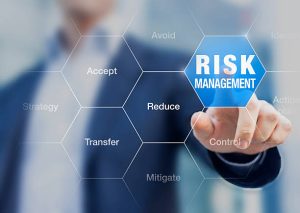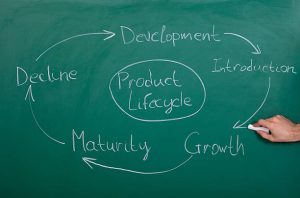Every business leader will be overseeing change within their organisation, so it is vital to make sure projects are delivered effectively.
While implementing change is risky if not managed correctly, motivation can fade if a business stands still; staff and the business itself can become stagnant, and may well be left behind in the market.
This is why it’s crucial that every business leader should understand the nature of projects.
Business leaders don’t have to have been practising project managers or trained in project leadership competencies. At the very least, they need to be aware that the project world, the world that brings about a positive change outcome, is different from the ‘business as usual’ world.
The most important thing is to ensure the project is carefully planned, tested and implemented using valid project steps and stages.
With this in mind, here are 5 project management skills that every business leader should have:
1. Communication
Right information delivered in the right way at the right time to the right person (the four ‘R’s). It should be simple, but in the complicated project world, it is so easy to forget this. Communication is the biggest task of any project and the consequences of getting it wrong can prove costly. You need to decide who you need to communicate with; who are key players, and stakeholders and who are those that just need to be kept in the loop etc. Also, with these groups of people; you have to decide how detailed the information needs to be.

Example: reporting is not communicating. Producing the most wonderful 16-page report, full of data and with a wonderful layout, graphs, diagrams, images etc and emailing it to everyone is not effective communication. It is a waste of time and breaks the 4 R’s rule.
Remember; Right information (depends on the role of the person you are communicating with), delivered in the Right Way (not always a written report, ideas are usually beneficial when delivered verbally), at the Right Time (make sure key players are present and not on leave) to the Right People (different groups of people with different roles will need different information that relates to them, and is also delivered in an appropriate way).
2. Risks
Understanding the likely risks any project might face, having a plan in place to deal with the ones you can foresee, and imagining others that may be unlikely but could have a devastating effect on the outcome, are all part of the key project management skillset.

Example: a simple risk exercise can save hours of ‘recovery’ time in a project, by anticipating what might go wrong and what might be done to rectify this. A project may assume that all users of a system could be trained together in one place, which at the time may be reasonable, but factors such as transport strikes on those days or the sickness of the trainer could render this plan completely invalid. An alternative here could be virtual training and webinars that can offset those issues and also be more cost-effective and flexible.
3. Assumptions
At the start of any project, you cannot know everything, but you should at least understand what you do and don’t know. For instance, assuming that a piece of equipment already in place will work with a new system, can be catastrophic and a very costly mistake. Communication also comes in here; someone would probably know the folly of this if they had indeed been asked. Assuming staff will accept the changes the project will be sending their way, is also an assumption that can badly backfire. This is why taking the staff along with you as part of the project is an essential part of any successful project.
4. Change
Projects are about delivering change, but it is necessary to keep an open and critical mind when assessing ideas. Runaway ‘yes’s’ only lead to project overrun and also sometimes overspending.

Change gets more costly throughout the project lifecycle, so changes need to be controlled early on. Assess the cost of any ‘tweaks’ as you go along, rather than waiting until the testing phase, where the costs may come as a huge shock to stakeholders.
5. Sponsors
The combination of an engaged, influential project sponsor and a skilled project leader is key to delivering effective change. All individuals involved in the project need to know what they are supposed to be doing and what others are supposed to be doing, otherwise, there can be something between chaos and a vacuum – you can end up with the Project Leader replicating what others involved are doing which can lead to conflict and a very bad project outcome!
There are two ‘models’ of project leadership possible in an organisation these days:
- PAP: ‘Projects as Projects’ – challenging changes hence the need for a dedicated ‘pure’ full-time project manager
- PAU: ‘Projects as Usual’ – where each business manager needs to understand and acquire effective project management skills in order to run projects as part of their business as usual.
When I am supporting Managers to Lead a Project, usually their first, I ensure that they start by being very familiar with the Project Lifecycle. This provides a great structure to work with.
What is a Project Life Cycle?

The project life cycle is a 4-step framework designed to help project managers guide their projects successfully from start to finish. The purpose of the project life cycle is to create an easy-to-follow framework to guide projects.
The 4 stages of the project life cycle?
- Project Initiation: understand the goals, priorities, deadlines, and risks of the project
- Project Planning: outline the tasks and timeline required to execute the project
- Project execution: turn your plan into action and monitor project performance
- Project closure: analyse results, summarize key learnings, and plan next steps
Understanding and planning for the 4 stages of the project life cycle can help you manage, organise, and plan so your project will go off without a hitch.
A project management life cycle will help:
- Ease communication between project teams and stakeholders
- Ensure goals are achievable with the available resources
- Help mitigate risk and keep projects on track
But what does each stage of the cycle look like?
1. Project initiation stage: understand the goals, priorities, deadlines, and risks of the project
The initiation stage of the project management life cycle is when you meet with clients and stakeholders to understand their goals, motivations, and hopes for the project.
During this stage, the aim is to hash out the high-level goals that must be met for you to consider the project a success. There’s lots of research, discovery, and discussion, but very little detailed planning in this phase.
The key project management steps for the initiation stage include:
- Identifying project objectives and deliverables
- Outlining project risks, dependencies, constraints, and priorities
- Establishing project scope based on deadlines and available resources
- Submitting a project proposal for approval
Kick off the project management process by identifying project objectives and deliverables
Start by talking with your stakeholders or clients to get to know their needs. Try to tease out what’s important to them, what projects they’ve tried in the past, and what they hope to see in the future.
- From there, you can move on to building out the concrete objectives and deliverables that your team will be responsible for, given the scope of the project and the available resources.
- Be sure to document the takeaways from these initial meetings…you’ll want to have a record of the agreed-upon deliverables when it comes to the project closure stage.
Outline project risks, dependencies, constraints, and priorities
Once you’ve mapped out the high-level project goals, it’s time to explore all of the variables that might impact the progress of the project, including:
- Risks: Factors that can negatively impact the cost, goals, timeline, or results of a project
- Dependencies: Relationships between activities or tasks
- Constraints: Limiting factors like technology, resources, time, and cost
By identifying all of these variables early on you can nip a lot of potential problems in the bud before they throw off your whole project timeline.
Understanding risks:
A risk breakdown can aid in identifying and assessing all of the risks in your project. A risk breakdown structure is a hierarchical representation of risks, starting with the high-level risks and then breaking them down into more granular risks.
Establish project scope, based on deadlines and available resources
With a handle on all of the variables at play, you can start breaking the project down into more actionable steps. Set boundaries on project scope based on your deadlines and the resources at your disposal, and think about what skill set your staff will need. Mind maps and flow charts can be helpful for organising all of the moving parts to map out what’s reasonable based on project constraints.
Summarise the takeaways of the project initiation stage in a project proposal. All of the details that you establish during the initiation stage should be outlined in a project proposal, the only major deliverable for this initiation stage. A project proposal is a report that details all of the goals, scope, requirements, budget, participants, and deadlines of a project.
Not to be confused with a project plan, which includes a much more in-depth description of how the project will be executed, a project proposal should be no longer than a few pages. Depending on the complexity of a project, an action plan one-pager might suffice.
Either way, when you’re a few months into the project, trying to prioritise the work of your team and make decisions that impact the direction of the project, you’ll thank yourself for creating clear documentation of these high-level project goals.
2. Project planning stage: outline the tasks and timeline required to execute the project
Once your project proposal has been approved, it’s time to move on to the project planning stage of the project life cycle. The project planning stage is when you create a comprehensive project plan, which involves:
- Translating your proposal into a series of actionable tasks and scheduling them in a project roadmap
- Documenting processes or workflows that your team will use
- Creating measurable short-term goals from high-level project goals
- Addressing potential issues that could derail your roadmap
This project plan will be the source of truth for your team when any questions, conflicts, or issues arise throughout the project.
Let’s dig into the most important major deliverable of the project planning stage: the project roadmap.
Create a project roadmap with project tasks and milestones
Creating a project roadmap is one of the more important project life cycle steps, crucial for organising your team and keeping work on track. A project roadmap outlines all of the start and end dates of every major project task (plus any big milestones you’re working towards).
I LOVE GANTT CHARTS!!!!! They are a great tool for project road mapping because they can show the duration and timing of a number of dependent tasks. They’re perfect for planning and scheduling, and eventually monitoring progress throughout the execution stage of the project life cycle.
The best thing about using a Gantt chart for your project roadmap?
You can show a number of concurrent timelines on a single chart, which makes it easy to account for task dependencies. They do not need to be static, as issues arise they can be easily altered and it’s a great visual to discuss what effect one planned task if delayed, can impact on another and allow discussion as to how the project can be ‘tweaked’.
The visual format of a Gantt chart makes visualising and adjusting for dependencies much easier than a spreadsheet. And because it’s visual, it’s easy for your team to see, understand, and give feedback on their upcoming tasks.
Once your roadmap is in place, the last step of the planning stage is to assemble your team and hold a project kick-off, launching you into the next stage of the project life cycle: the execution stage.
3. Project execution stage: turn your plan into action and monitor project performance
The project execution stage is the true start of the project when you carry out all of the tasks you mapped out in the planning stage. This is where the majority of the project work takes place, and it requires constant monitoring. Expect to adjust your goals and roadmap as you get deeper into the project.
As a project manager, your main responsibilities of the project execution stage are to:
-
- Monitor and control the execution process, reviewing the quality of the team’s output
- Adjust and update tasks, goals, and deadlines to meet changing conditions
- Communicate between your team and the project stakeholders
Create status reports to communicate execution progress throughout the project management process
Although most of your time during the execution stage will be spent monitoring and adjusting to keep the project on track, you’ll also need to keep stakeholders up to date with any changes to the project status.
Using a project status report, like the one below, will help make sure you don’t leave out any pertinent details when you’re communicating with stakeholders. KPIs and budget updates should also be included if you have any.
4. Project closure stage: analyse results, summarise key learnings, and plan next steps
Once you’ve achieved your project goals and the results have been signed off on by your stakeholders, it’s time for the project closure stage.
In the project closure stage of the project management process, you:
- Handoff deliverables
- Release team members and project resources
- Analyse project performance in a project retrospective
A project retrospective is as much about reviewing the success of the project as it is about extracting learnings that can apply to future projects.
Projects will never go without obstacles, and there will always be things to learn that will ease the progress of other projects.
Another duty of a project manager in the project closure phase can be to analyse the team’s performance, based on the quality of their work and how well they were able to meet deadlines.
These performance reviews can be delivered to team members (or higher-ups) in the form of an easy-to-read visual summary.
But remember…your project isn’t complete until all of your documents have been handed over and approved by your client or stakeholder.
Good luck! Follow the project lifecycle and have clear and effective communication with all stakeholders and you can’t go wrong.

Should you need any further advice or have a query or question regarding a project you are planning or have started – do not hesitate to contact me and I will be glad to help in any way I can…
Jayne Warwicker BSc – Founder of the Lioness Power System.


